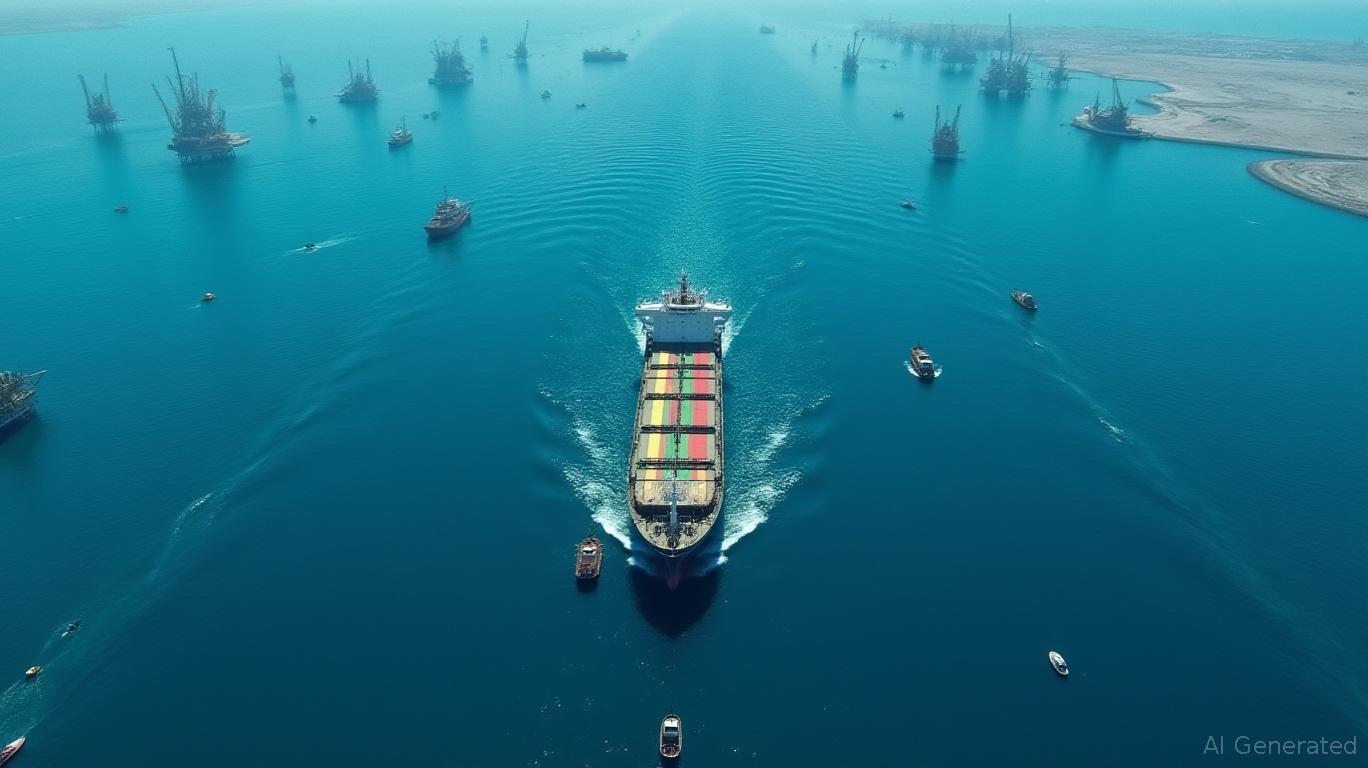Navigating Geopolitical Crosscurrents: How to Position for Fed Hesitancy and Middle East Volatility
The Israel-Iran conflict has evolved into a high-stakes geopolitical showdown, with military strikes and threats destabilizing the Middle East and rattling global energy markets. Meanwhile, the Federal Reserve's cautious approach to rate cuts has left investors balancing between inflation risks and the allure of growth stocks. In this environment, portfolios must prioritize resilience over speculation. Here's how to navigate the crosscurrents.
The Geopolitical Flashpoint: Oil Prices and the Strait of Hormuz
The conflict's most immediate impact lies in energy markets. Iran's repeated threats to block the Strait of Hormuz—a chokepoint for 20 million barrels of oil daily—have kept Brent crude volatile. Despite remaining open, the strait's vulnerability has already added a $10/barrel risk premium, pushing prices to $76/bbl this year. Analysts warn that a full blockage could spike prices to $160/bbl, a scenario markets are now pricing in.

The psychological toll is equally significant. Insurance costs for vessels transiting Hormuz have surged 50% since early 2025, while fear of sabotage has amplified prices beyond fundamentals. This volatility isn't just a temporary spike—it's becoming a permanent feature of energy markets.
Fed Hesitancy: Stagflationary Pressures and Tariff Risks
The Fed's decision to hold rates at 4.25%–4.5% reflects its struggle to balance inflation and growth. While headline inflation has eased to 2.4% year-over-year, core inflation (2.8%) and supply chain bottlenecks persist. Geopolitical tensions and U.S. tariffs are exacerbating these risks.
Tariffs on semiconductors and energy products—such as those imposed on Chinese imports—are inflating costs. J.P. Morgan estimates existing tariffs have reduced global GDP by 0.7%–1.0%, with companies like P&G and Walmart absorbing margin pressure. If new tariffs are levied, inflation could rise further, derailing the Fed's planned two rate cuts by year-end.
Sector Strategies: Defensive Plays and Energy Resilience
The market's bifurcation is clear: defensive sectors are thriving, while cyclical stocks are struggling.
Utilities and Healthcare: Steady as She Goes
Utilities (e.g., Duke Energy, NextEra Energy) and healthcare (e.g., Johnson & Johnson) have outperformed this year, gaining 8% and 5%, respectively. Their regulated cash flows and inelastic demand make them ideal hedges against volatility.Energy: Betting on Geopolitical Risk
Energy stocks (e.g., ExxonMobil, Chevron) have surged as oil prices rise, but investors should focus on companies with low production costs. ETFs like the Energy Select Sector Fund (XLE) offer diversified exposure.Semiconductors: Proceed with Caution
Semiconductors (e.g., NVIDIA (NVDA)) face dual pressures: supply chain disruptions and demand uncertainty. While NVDA's AI-driven growth remains compelling, its stock price—up 25% YTD—has yet to reflect tariff risks.
- Short-Term Treasuries: The New Safe Haven
Overweight short-term Treasuries (e.g., 1–3 year maturities) to hedge against rate volatility. Avoid long-dated bonds, as duration risk escalates with Fed uncertainty.
Portfolio Construction: A Volatility Playbook
- Equities: Overweight utilities (60%), healthcare (30%), and energy (10%). Underweight autos, housing, and tech hardware.
- Fixed Income: Allocate 70% to short-term Treasuries and 30% to TIPS.
- Commodities: Add 5–7% to gold (GLD) and energy ETFs (CRAK) to capture geopolitical premiums.
Key Risks to Monitor
- Tariff Escalation: New duties could reignite inflation and delay Fed cuts.
- Hormuz Blockage: A full closure would spike oil prices and trigger stagflation.
- Fed Policy Missteps: Tightening in the face of persistent inflation could derail equities.
Conclusion
The S&P 500 and Nasdaq are caught in a tug-of-war between geopolitical fears and Fed uncertainty. Investors must treat this environment as a prolonged period of volatility, not a temporary blip. Defensive equities, short-term bonds, and commodity hedges offer the best path to preserving capital and capturing asymmetric upside. As the Strait of Hormuz and the Fed's next move remain wildcards, patience and diversification are paramount.

Comments
No comments yet